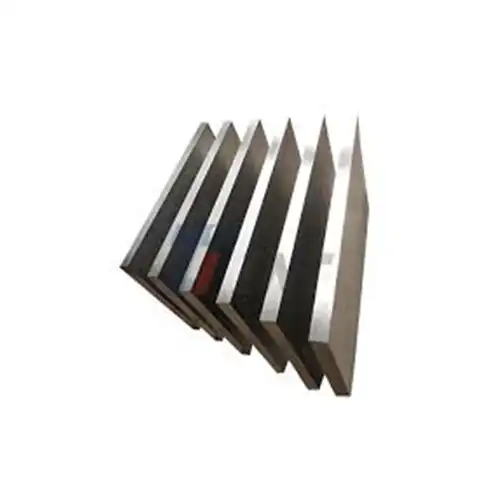The Remarkable Properties of Titanium Rods in Medical Applications
Unparalleled Biocompatibility: A Cornerstone of Successful Implantation
One of the most significant advantages of titanium rod medical implants is their exceptional biocompatibility. This remarkable property ensures that the human body accepts the implant with minimal risk of rejection or adverse reactions. The compatibility of titanium with body tissues stems from its ability to form a stable oxide layer on its surface, which acts as a protective barrier between the implant and surrounding tissues.
This biocompatibility is crucial in bone regeneration processes, as it allows for seamless integration of the titanium rod with the patient's bone structure. The reduced risk of rejection translates to faster healing times and improved overall outcomes for patients undergoing orthopedic procedures.
Striking the Perfect Balance: Lightweight Yet Durable
Titanium rods offer an optimal combination of strength and lightness, making them ideal for use in medical implants. The excellent strength-to-weight ratio of titanium ensures that these rods can withstand significant loads while remaining lightweight enough to minimize discomfort for the patient.
In bone regeneration applications, this balance is particularly crucial. The titanium rod medical implant must be strong enough to support the healing bone structure while being light enough to avoid placing undue stress on surrounding tissues. This unique property of titanium allows for the creation of implants that provide robust support without compromising patient comfort or mobility.
Corrosion Resistance: Ensuring Long-Term Reliability
Another key advantage of titanium rods in medical applications is their superior resistance to corrosion. The human body presents a challenging environment for implants, with exposure to various bodily fluids and potential electrochemical reactions. Titanium's natural resistance to corrosion ensures that the implant remains stable and functional over extended periods.
This corrosion resistance is particularly beneficial in bone regeneration processes, which often require long-term implantation. The ability of titanium rod medical implants to withstand the corrosive effects of the body environment contributes to their longevity and reliability, reducing the need for revision surgeries and improving patient outcomes.
Titanium Rods in Action: Revolutionizing Bone Regeneration Techniques
Fracture Fixation: Providing Stable Support for Healing
Titanium rods have become a go-to solution for fracture fixation, particularly in long bones such as the femur or tibia. The use of titanium rod medical implants in these cases provides stable internal fixation, allowing for proper alignment and support of the fractured bone during the healing process.
The unique properties of titanium, including its strength and flexibility, make it an ideal material for this application. The rod can be customized to fit the patient's anatomy, with diameters ranging from 3mm to 100mm and lengths up to 6 meters. This customization ensures optimal fit and function, promoting faster and more effective bone regeneration.
Spinal Fusion: Enhancing Stability and Promoting Bone Growth
In spinal fusion procedures, titanium rods play a crucial role in stabilizing the spine and promoting bone growth between vertebrae. The biocompatibility of titanium allows for excellent osseointegration, where the bone grows directly onto the surface of the implant, creating a strong and stable fusion.
The fatigue resistance of titanium rod medical implants is particularly important in this application, as the spine is subjected to constant motion and stress. Titanium's ability to withstand these cyclic loads without failure ensures long-term stability and success of the spinal fusion.
Joint Replacement: Providing a Strong Foundation for Prosthetics
Titanium rods are also widely used in joint replacement surgeries, particularly in hip and knee replacements. The rods serve as a strong foundation for the prosthetic joint, providing stability and support for the new articulation.
The corrosion resistance of titanium is especially valuable in this application, as joint implants are exposed to constant movement and potential wear. The ability of titanium rod medical implants to maintain their integrity in this demanding environment contributes to the longevity and success of joint replacements.
Advancements and Future Prospects in Titanium Rod Technology
Surface Modifications: Enhancing Osseointegration
Recent advancements in titanium rod technology have focused on surface modifications to enhance osseointegration. Techniques such as sandblasting or chemical etching can create micro-textures on the surface of the rod, increasing the surface area for bone attachment and promoting faster and stronger integration with the surrounding bone tissue.
These surface modifications can be customized based on the specific requirements of the bone regeneration application. For example, a polished surface might be preferred for certain joint replacement components, while a rougher, sandblasted finish might be ideal for spinal fusion rods.
Titanium Alloys: Tailoring Properties for Specific Applications
The development of titanium alloys has further expanded the possibilities for titanium rod medical implants. Alloys such as Ti6Al4V ELI (Extra Low Interstitial) offer enhanced mechanical properties compared to pure titanium, including higher tensile and yield strength.
These advanced titanium alloys allow for the creation of implants with specific properties tailored to different bone regeneration applications. For instance, an alloy with higher strength might be chosen for load-bearing applications, while a more flexible alloy could be used in areas requiring greater elasticity.
3D Printing: Customization and Complex Geometries
The advent of 3D printing technology has opened up new possibilities for titanium rod medical implants. This additive manufacturing technique allows for the creation of highly customized implants with complex geometries that would be difficult or impossible to achieve through traditional manufacturing methods.
3D-printed titanium rods can be designed to perfectly match a patient's anatomy, potentially improving fit, function, and overall outcomes in bone regeneration procedures. This technology also allows for the creation of porous structures that can further enhance osseointegration and reduce the overall weight of the implant.
Conclusion
Titanium rods have proven to be invaluable in the field of bone regeneration, offering a unique combination of biocompatibility, strength, and durability. As technology continues to advance, we can expect even more innovative applications of titanium rod medical implants, further improving patient outcomes and quality of life. For more information about high-quality medical titanium products, including rods, wires, plates, and forged products, please contact us at export@tiint.com.











 2025-08-27 13:30:28
2025-08-27 13:30:28

